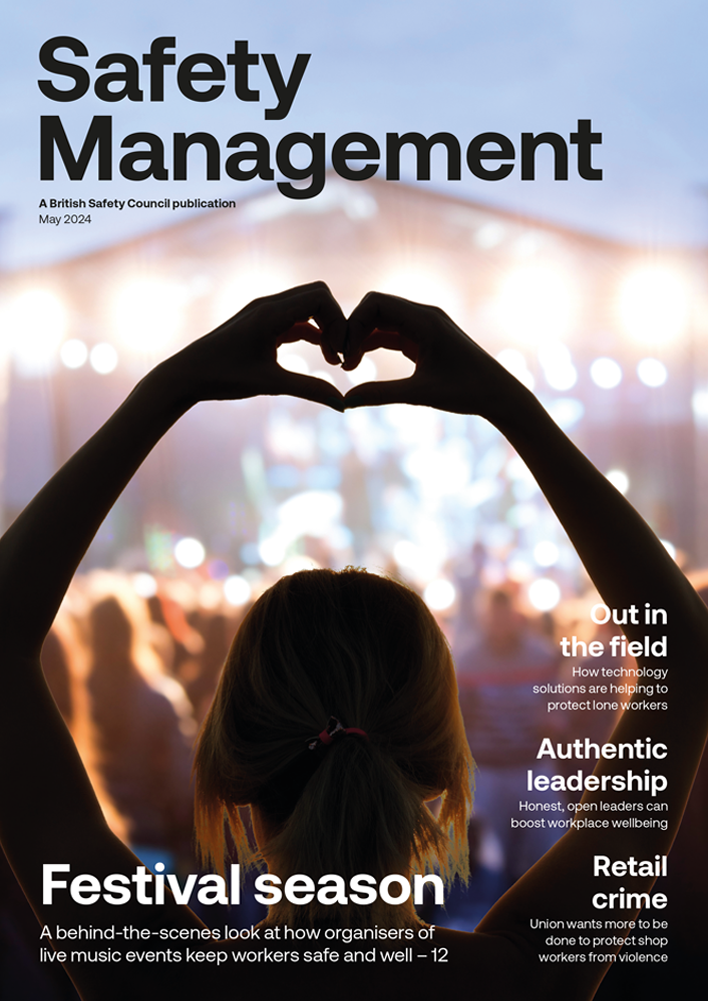As a health and safety director or manager, there are a whole host of risks you will be familiar with when it comes to health and safety provision for outdoor workers.
Features
Get outdoor workers UV-protected this summer
In terms of workers’ skin health, occupational dermatitis is a common issue for those who work with their hands or come in contact with potentially harmful contaminants. But when it comes to protecting employees who work outdoors specifically, UV protection should be one of the highest priorities on the health and safety checklist.
For outdoor workers, the statistics around skin cancer are alarming. Skin cancer is the most common type of cancer in the world, and closer to home, a huge 1,700 people are diagnosed with skin cancer as a direct result of occupational sun exposure in Britain every year and around 60 of these diagnosed cases are fatal, according to IOSH No Time To Lose campaign, while a huge 44 per cent of occupational melanoma deaths can be attributed to construction workers according to BC Legal.
The risk that comes with outdoor, and even mobile work is evident, with workers experiencing more hours exposed to harmful UV rays. Glass can block UVB rays effectively but does not provide adequate protection against UVA rays, which can lead to premature skin ageing and wrinkling.
 Providing employees with cream protection and raising awareness of the damaging impact of sun exposure are essential. Photograph: iStock/36clicks
Providing employees with cream protection and raising awareness of the damaging impact of sun exposure are essential. Photograph: iStock/36clicks
Last summer was one of the hottest on record, with sunshine hours well above average, but a recent survey ran by SC Johnson Professional however showed that only one in four outdoor workers wore protective sun cream during this time.
Cancer Research UK considers that with this increased exposure to UV radiation, it is probable that many of those who worked outdoors experienced a painful sunburn as a result – an occurrence that just once every two years can triple the risk of malignant melanoma.
Only 16 per cent of the survey respondents said that they would wear sun cream on cloudy days, despite most knowing that UV rays could still pass through cloud. In contrast to at-work behaviour, only 13 per cent of respondents stated that they would not use sun cream on holiday demonstrating knowledge of the dangers of UV radiation, but not the risk posed while on the job.
A very small number of the respondents were unaware of how shocking the statistics are; 72 per cent said they didn’t know as many as one death and five new cancers per week can be attributed to occupational exposure to UV radiation.
 Clothing can be one of the most effective barriers against the sun
Clothing can be one of the most effective barriers against the sun
One of the more significant findings showed that only 13 per cent of those who didn’t wear sun protection cream were, in fact, provided with this in the workplace. This is in stark contrast to those who did wear sun protection, of which 27 per cent were provided with sun cream by their employer thus demonstrating the impact that product provision can have. With results showing a lack of awareness around UV as well as a lack of sun protection provision, the survey concluded that attitudes at employer and employee level need to be changed when it comes to sun protection at work.
Employers are in the best position to help make this happen; UV protection should be a vital part of your PPE policy. With the upcoming summer months seeing UV levels at their highest, raising awareness and preparing your workforce now is essential.
It is recommended too that employees adapt the FIVE S approach to sun safety:
SLIP on sun protective clothing – Encourage workers to keep covered up. Clothing can be one of the most effective barriers.
SLOP on sun cream – Apply a broad spectrum, minimum SPF30 sun cream 20 minutes before initial exposure and re-apply every two hours or more frequently if sweating heavily.
SLAP on a hat and neck protection – Where possible choose a hat with ear and neck protection.
SLIDE on some sunglasses – Slide on a pair of high-quality wrap-around sunglasses to protect the eyes.
SHADE from sun where possible – Encourage workers to take breaks or work in a shaded area wherever possible, especially from 11am-3pm.
Free resources are available and can be very effective tools when it comes to raising awareness and encouraging best practice, flagging UV levels and advising on sun protection.
More advice at: www.hse.gov.uk/skin/sunprotect
Chris Brooks is technical product manager at SC Johnson Professional
FEATURES

Backstage pass: how do festival organisers keep staff and visitors safe?
By Kerry Reals on 29 April 2024
As festivalgoers prepare to pull on their wellies, dig out their sunhats and dust off their tents ahead of another summer of live outdoor events, Safety Management looks behind the scenes at how festival organisers keep the armies of workers tasked with setting everything up safe and well.

AI: a powerful new tool for managing safety risks
By Robert Leech, EcoOnline on 29 April 2024
AI-driven technology is revolutionising the management of occupational safety and health, making it easier to spot hazards, predict unsafe behaviours and take preventative action to protect workers.

Pursuing workplace wellbeing through authentic leadership
By Dr Audrey Fleming, British Safety Council on 26 April 2024
By being open, honest and vulnerable in their interactions at work – and genuinely seeking and valuing the input of employees – leaders can develop a workplace atmosphere where trust and respect flourish, in turn supporting the wellbeing, engagement and performance of their teams.



